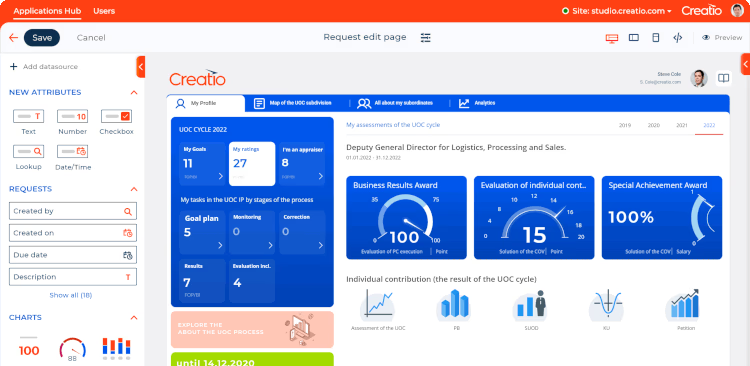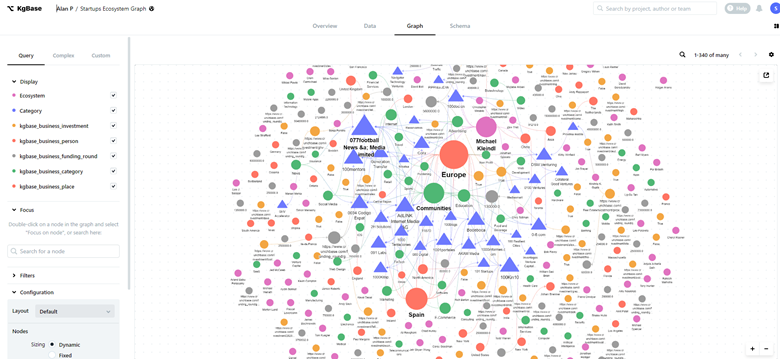Enhance Open System Database Development with No-Code Advancement Platforms
Enhance Open System Database Development with No-Code Advancement Platforms
Blog Article
Discover How Scalable Databases Can Be Utilized Without Coding to Improve Your Service Workflow
In today's hectic service setting, the capability to handle and evaluate information efficiently is vital. no-code. Scalable databases, specifically when matched with no-code solutions, use a transformative technique that equips non-technical customers to simplify operations.
Comprehending Scalable Data Sources
Scalable data sources are necessary for modern-day service operations, enabling companies to effectively take care of increasing volumes of information without giving up efficiency. These data sources are developed to adapt and grow to the altering demands of a service, making sure that they can manage larger datasets and even more complicated inquiries as business needs advance.
Recognizing scalable data sources entails recognizing their two key kinds: vertical scaling and horizontal scaling. Upright scaling, or "scaling up," involves including even more power (CPU, RAM) to an existing server to improve efficiency. Conversely, horizontal scaling, or "scaling out," involves including extra web servers to disperse the lots, which typically results in better versatility and fault resistance.
One more essential facet is the architecture of scalable databases, which can be either non-relational or relational. Relational data sources, such as MySQL and PostgreSQL, are structured and use SQL for inquiries, while non-relational data sources, like MongoDB and Cassandra, offer even more adaptability with disorganized information.
Ultimately, recognizing scalable data sources is important for businesses aiming to utilize information as a tactical property, allowing them to stay competitive in an increasingly data-driven environment.

Benefits of No-Code Solutions
Unlocking the potential of no-code solutions encourages services to simplify operations and improve productivity without the need for extensive programming knowledge. These systems permit non-technical customers to develop, modify, and manage databases easily, therefore equalizing access to technology across teams.
One of the main benefits of no-code services is their speed of application. Organizations can swiftly deploy applications and automate processes, substantially reducing the moment invested in advancement cycles. This dexterity enables companies to respond promptly to market adjustments and consumer needs, fostering an one-upmanship.
Additionally, no-code platforms lower reliance on IT departments for daily jobs, allowing technological groups to concentrate on more intricate projects that need specialized abilities. This change not just maximizes resource allowance but also promotes innovation within the company.
Cost-effectiveness is another benefit, as no-code solutions can lower advancement and upkeep expenses. By decreasing the demand for coding proficiency, business can harness the abilities of their existing workforce without the expenses of hiring added personnel.
Popular No-Code Data Source Equipment
The increase of no-code services has caused the development of various database tools that satisfy businesses looking for efficiency and availability. These devices empower customers with restricted technical knowledge to create, handle, and adjust databases seamlessly.

Caspio sticks out for its capacity to construct internet applications with no coding. It allows businesses to develop durable data sources and release applications quickly, dealing with different market demands. Propensity uses easy to use user interfaces and powerful information administration capacities, allowing companies to construct custom applications tailored to their operations.

Usage Instances in Business Procedures
How can companies leverage data source tools to boost their procedures? Scalable databases provide organizations with effective capacities to handle and examine information without the demand for comprehensive coding understanding. These devices can improve different organization procedures, inevitably causing her comment is here enhanced efficiency and performance.
One noticeable use case is consumer connection management (CRM) Organizations can make use of scalable databases to track client interactions, choices, and feedback, making it possible for customized communication and better service. By streamlining this information, teams can work together more effectively and react to client requirements in real-time.
Another substantial application is supply management. Companies can employ no-code data source tools to keep an eye on stock levels, track shipments, and projection demand. This makes certain optimal inventory levels, minimizes waste, and minimizes stockouts.
Additionally, task management can gain from scalable data sources by permitting teams to take care of jobs, deadlines, and resources in an unified platform. With real-time updates and information visualization, job managers can make enlightened choices.
Beginning With Application
Carrying out scalable databases in business operations calls for an organized strategy to make certain effective integration and utilization. The very first step is to perform a thorough demands assessment, identifying details business requirements, information types, and anticipated growth patterns. This foundational understanding will direct the choice of the proper data source service.
Next, select an user-friendly, no-code database platform that lines up with your functional objectives. no-code. Lots of contemporary remedies supply user-friendly user interfaces, enabling non-technical customers to handle data properly. After choosing a see it here platform, establish a clear information architecture that describes how information will be organized, accessed, and maintained
Training is crucial; ensure that staff member are outfitted with the required abilities to make use of the database. Think about providing workshops or tutorials to familiarize team with the system's performances.
Verdict
In verdict, the assimilation of scalable databases via no-code options offers considerable benefits for organization operations. Inevitably, leveraging these technologies can lead to boosted productivity and functional effectiveness, placing businesses for sustained development in an affordable landscape.
One preferred no-code data source device is Airtable, which integrates the performance of a spreadsheet with the power of a database.Just how can services take advantage of database devices to improve their operations? Businesses can utilize scalable data sources to track consumer interactions, preferences, and responses, making it possible for customized interaction and better service.Executing scalable databases in company procedures requires a structured approach to guarantee effective assimilation and application.In verdict, the combination of scalable data sources through no-code remedies offers browse around this site significant benefits for company operations.
Report this page